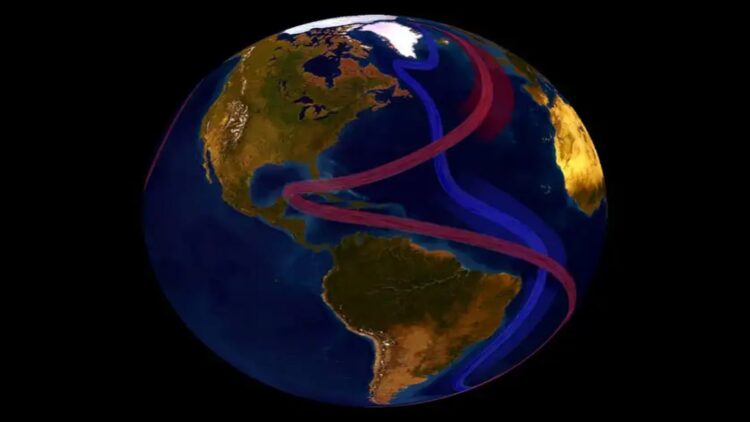Scientists predict that there is an ocean engine with the biggest role in driving key Atlantic currents that regulate Earth’s climate. New research suggests that the Irminger Sea off southeastern Greenland is where warm waters that transport heat northwards from the Southern Hemisphere sink. It is discovered that these waters then return south along the bottom of the ocean.
Research finds a spot in the Atlantic
According to scientists, this region plays a critical role in powering the ocean conveyor belt known as the Atlantic Meridional Overturning Circulation (AMOC).
Led by Qiyun Ma, the author and postdoctoral researcher at the Alfred Wegener Institute for Polar and Marine Research in Germany, argues that the key discovery in this study is that Irmiger Basin has a crucial role in driving changes in the AMOC.
This conclusion is also supported by the latest observations as Ma told Live Science and the work highlights the urgent need for better monitoring in this particular location, he said.
The AMOC, which includes the Gulf Stream, maintains a temperate climate in the Northern Hemisphere and regulates weather patterns across the globe. However, due to climate change, the AMOS may not be able to keep temperatures stable for a long period.
Livescience.com posted that research reveals that Arctic meltwater gushing into the North Atlantic is reducing the density of surface waters and preventing them from sinking to form bottom currents, thus slowing the speed of the machine that powers the AMOC.
In addition, this process shows that the Irminger Sea is particularly important for keeping these bottom currents flowing.
Changes in the Atlantic Meridional Overturning Circulation
The Conversation reports that Atlantic Meridional Overturning Circulation funnels heat northwards through the Atlantic Ocean and is crucial for controlling climate and marine ecosystems.
However, it is reported that it is now weaker than at any other time in the past 1,000 years, and global warming is credited for this change.
“But climate models have struggled to replicate the changes observed to date – until now,” said the conversation.com.
“Our modelling suggests the recent weakening of the oceanic circulation can potentially be explained if meltwater from the Greenland ice sheet and Canadian glaciers is taken into account.”
Furthermore, the Atlantic ocean circulation has been continuously monitored since 2004 and a longer-term view is necessary to assess potential changes and their causes.
While there are various ways to work out what was going on before these measurements began, one technique is based on sediment analyses. These estimates suggest the Atlantic meridional circulation is the weakest it has been for the past millennium, and about 20% weaker since the middle of the 20th century.
What does the future hold?
Per the report, the latest climate projections indicate that the “Atlantic overturning circulation will weaken by about 30% by 2060”. However, these estimates do not take into account the meltwater that runs into the subarctic ocean.
The Greenland ice sheet will continue melting over the coming century, possibly raising global sea level by about 10 cm. If this additional meltwater is included in climate projections, the overturning circulation will weaken faster and it is projected that it could be 30% weaker by 2040. That’s 20 years earlier than initially predicted.
“Our results show the Atlantic overturning circulation is likely to become a third weaker than it was 70 years ago at 2°C of global warming,” added the report from The Conversation.
“This would bring big changes to the climate and ecosystems, including faster warming in the southern hemisphere, harsher winters in Europe, and weakening of the northern hemisphere’s tropical monsoons.
“Our simulations also show such changes are likely to occur much sooner than others had suspected.”

